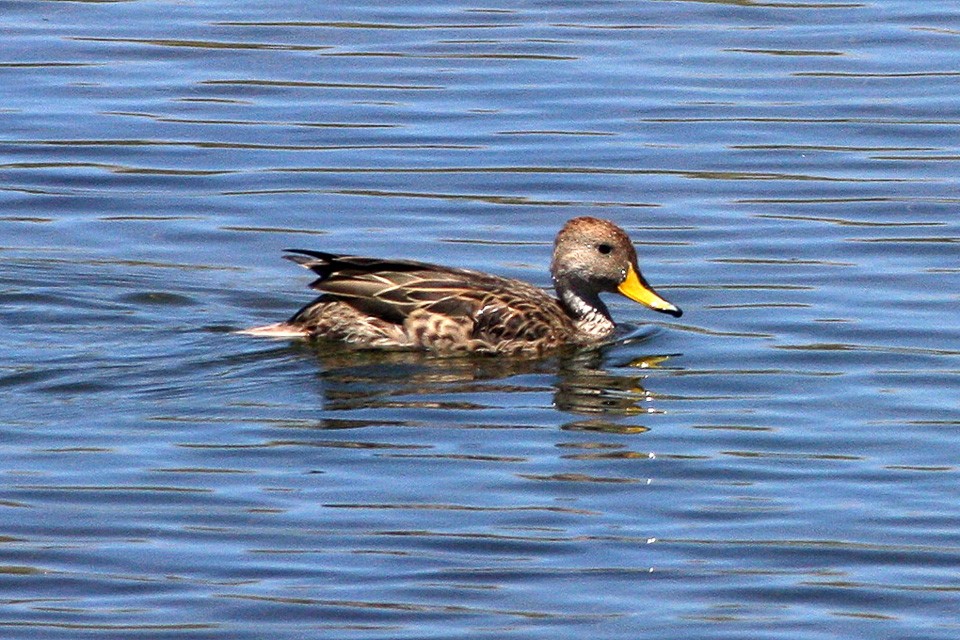Yellow-billed Pintail
A species of Anas Scientific name : Anas georgica Genus : Anas
Yellow-billed Pintail, A species of Anas
Botanical name: Anas georgica
Genus: Anas
Content
Description General Info
Description
The yellow-billed pintail has a brown head and neck. The bill is yellow with a black tip and a black stripe down the middle. The tail is brownish and pointed. The upper wing is grayish-brown, and the secondaries are blackish-green. The rest of the body is buffish brown with varying size black spots. The species is sometimes confused with yellow-billed teal, but can be differentiated by the yellow stripes on its bill, its larger size and its tendency not to form large groups. 
Size
55 cm
Nest Placement
Ground
Feeding Habits
Yellow-billed Pintail's diet includes seeds, aquatic plants, and invertebrates like crustaceans and molluscs. Yellow-billed Pintail forages by head dipping, upending, dabbling, and sometimes diving in shallow waters. This bird uniquely feeds on fur seal carcasses and forages at night in small groups.
Habitat
Yellow-billed Pintail inhabit a variety of wetlands across their broad range, including high-altitude lakes, marshes, and coastal regions with abundant fringe vegetation. They are found in both freshwater and saline environments, such as rivers, lagoons, flooded meadows, and sheltered bays. Yellow-billed Pintail thrive in open country landscapes, from sea level up to 4600m in the puna zones, and adapt to coastal tussock habitats in sub-Antarctic regions.
Dite type
Herbivorous
General Info
Feeding Habits
Bird food type
Distribution Area
The range includes much of South America, the Falkland Islands and South Georgia. The nominate and smallest subspecies, the South Georgia pintail A. g. georgica, is thought to number between 1000 and 1500 pairs, and is found only in South Georgia. The Chilean, or brown, pintail A. g. spinicauda is widespread on the South American mainland from extreme southern Colombia southwards, as well as in the Falkland Islands, and numbers well over 110,000. Niceforo's pintail A. g. niceforoi, formerly found in central Colombia, is believed to be extinct, having been last recorded in 1952 (and described only in 1946). Their habitat ranges from high elevation lakes and marshes to low elevation lakes and rivers and coasts in open country. 
Species Status
Not globally threatened.
